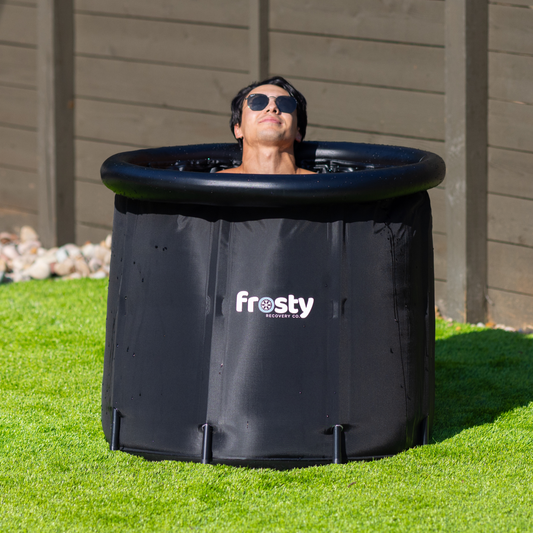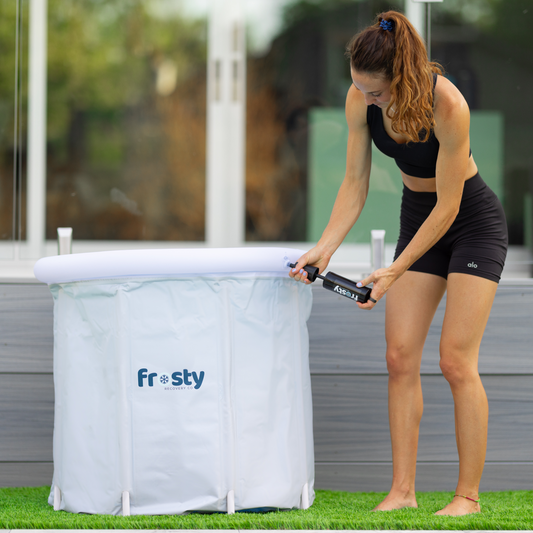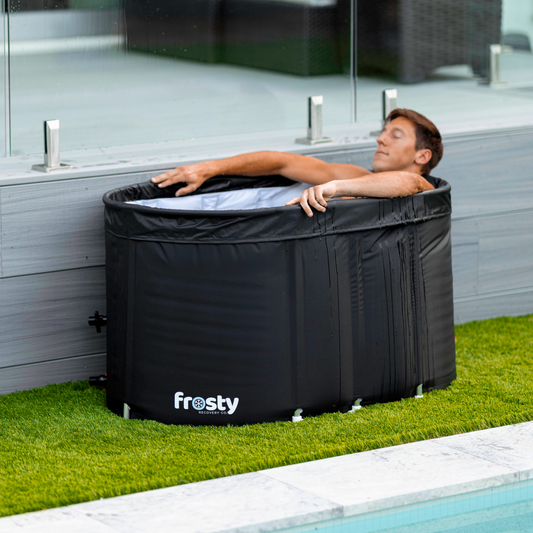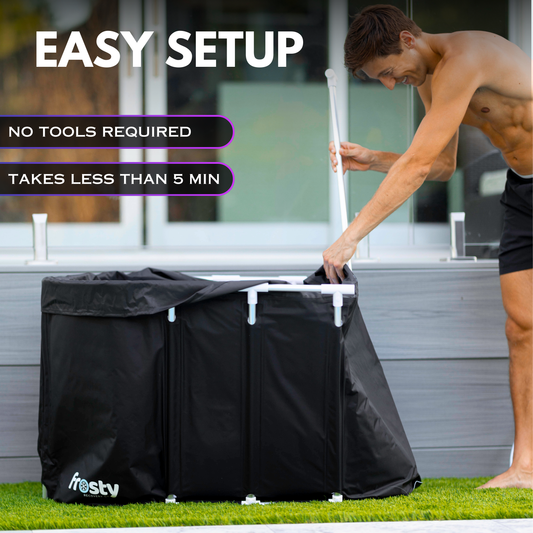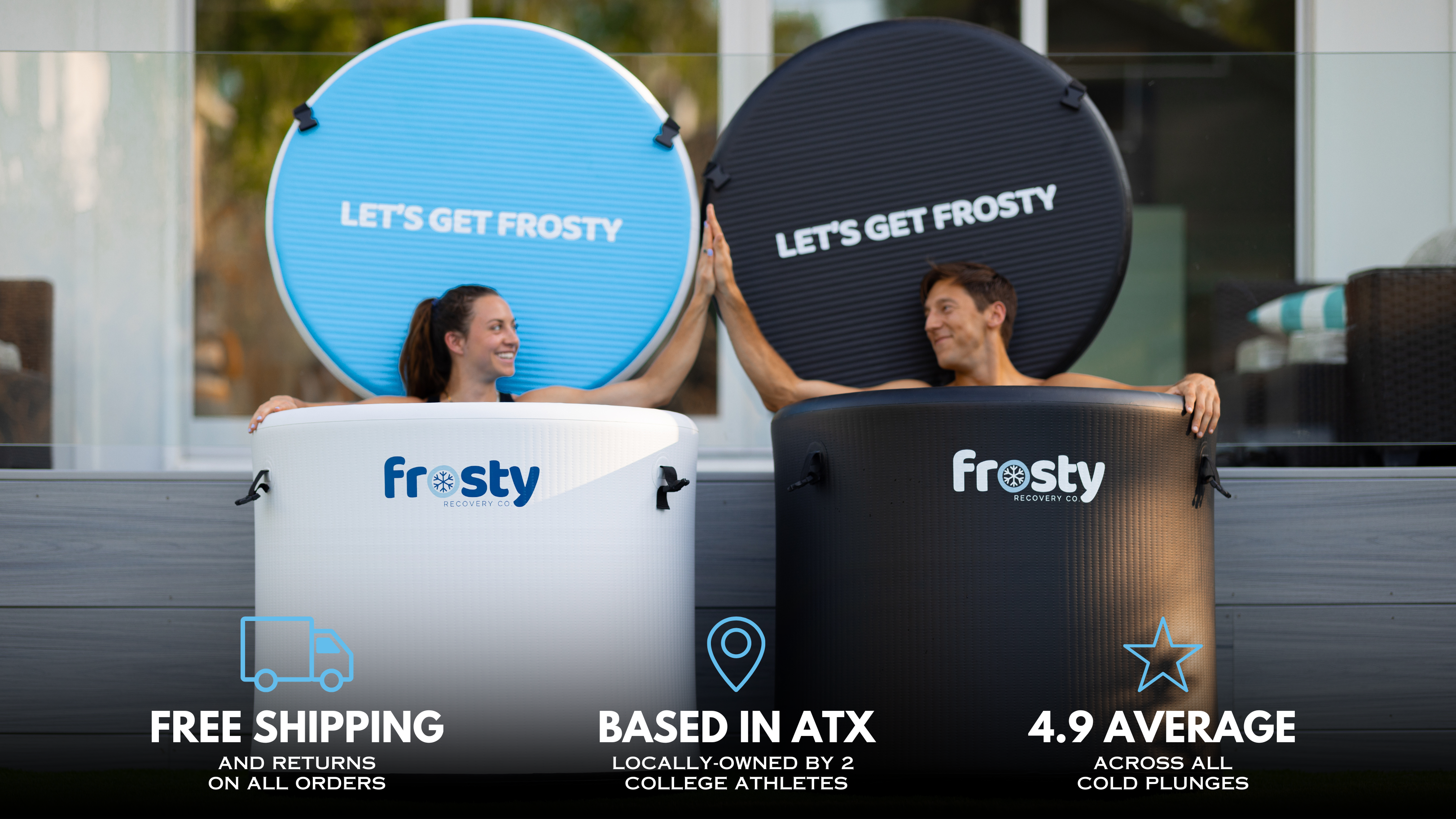
COLD PLUNGE BENEFITS
VIEW ALL BENEFITS-

MUSCLE RECOVERY
Reduces inflammation and muscle soreness, allowing for faster healing and a quicker return to physical activity.
-

MENTAL HEALTH
Helps to reduce stress and anxiety through the lowering of cortisol levels by stimulating the release of endorphins and adrenaline, leading to enhanced overall well-being.
-

IMPROVED SLEEP
Regular cold plunging can help regulate sleep patterns by influencing the nervous system and promoting relaxation.
-

METABOLISM BOOST
Increases metabolism by activating brown fat, which burns calories to generate heat in response to the cold.
FIND YOUR FROSTY
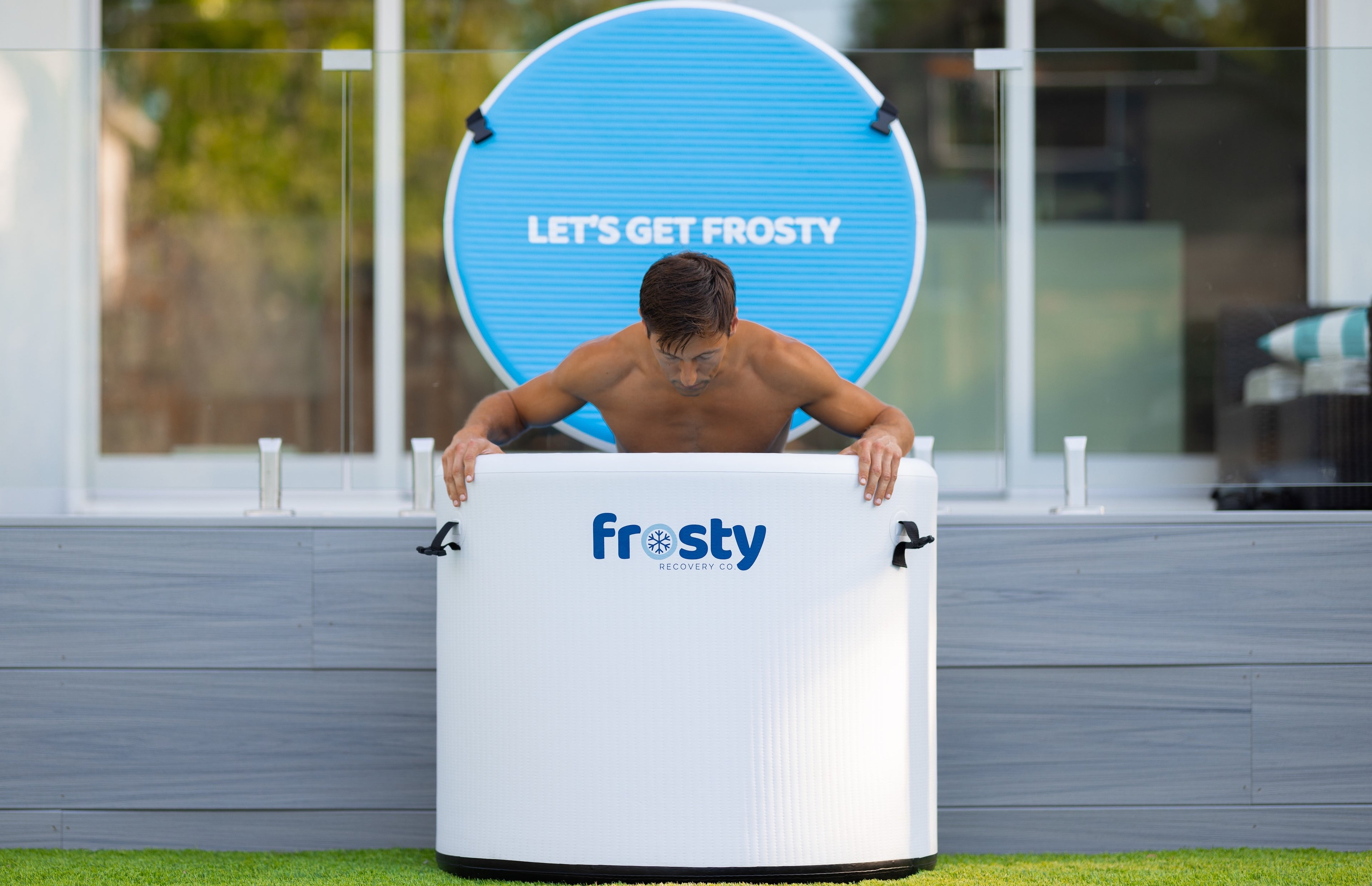
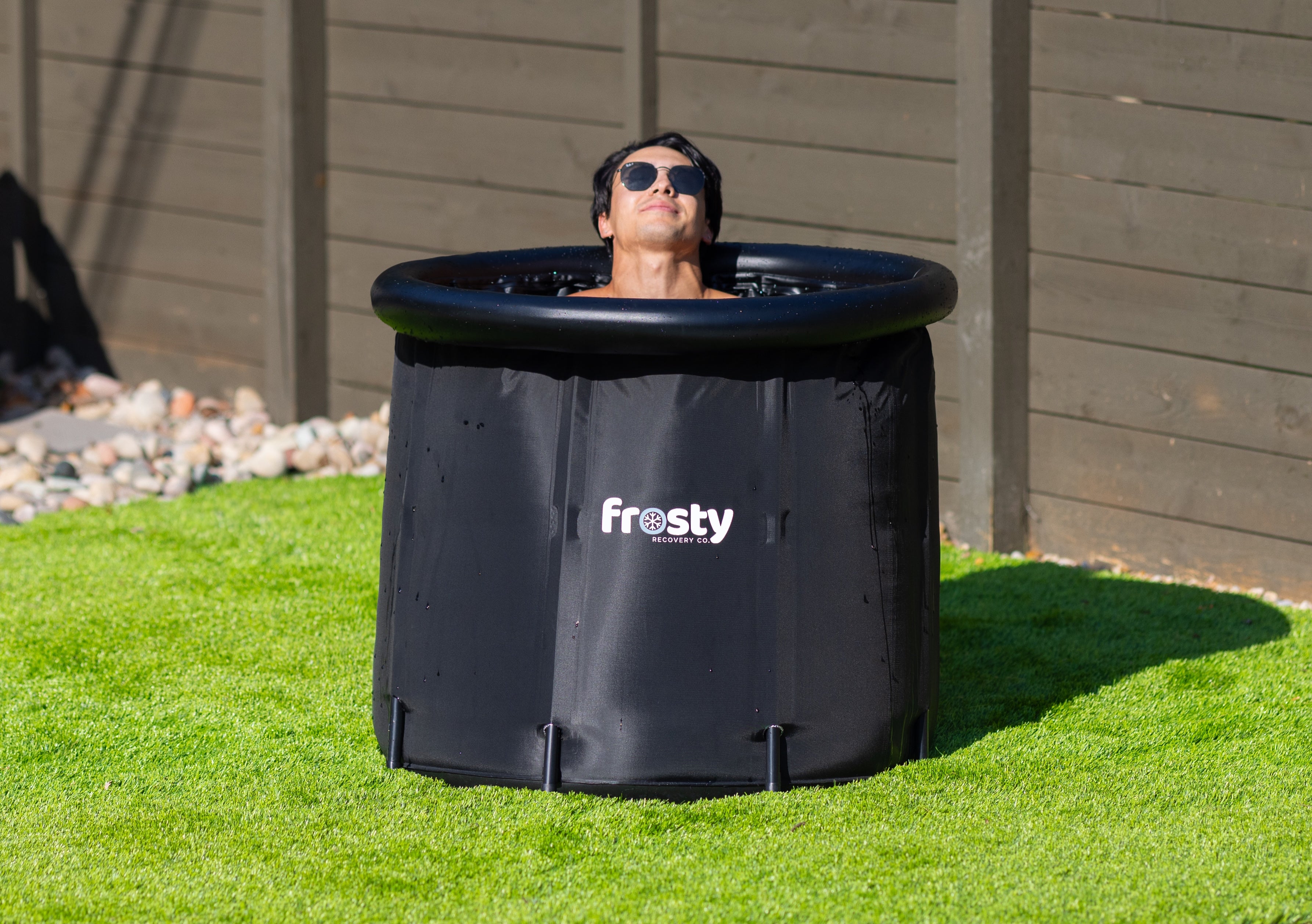
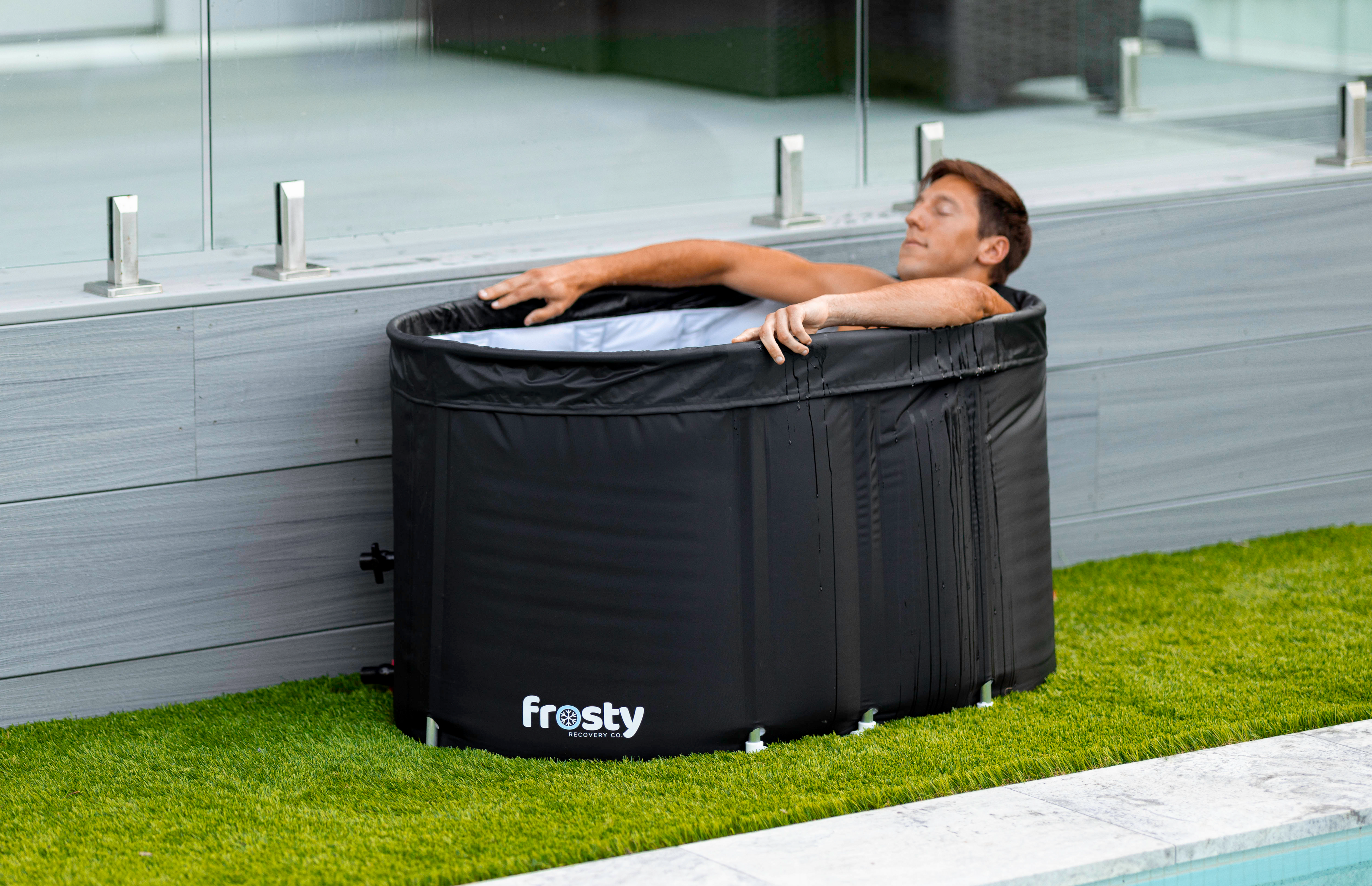
QUESTIONS & ANSWERS
What temperature should the water be for a cold plunge?
Cold plunge water temperatures typically range from 32-59°F. It should feel cold but not painfully so.
How long should I stay in a cold plunge?
The duration can vary but starting with brief sessions of around 1-3 minutes is common. Over time, you can gradually increase the duration up to 5-10 minutes, depending on your tolerance and comfort level.
When is the best time to cold plunge?
We recommend cold plunging first thing in the morning to wake your body up, which kicks the sympathetic nervous system into gear. If you’re looking for muscle recovery, cold plunging after a workout is also great.
SHOP ALL COLD PLUNGES
-
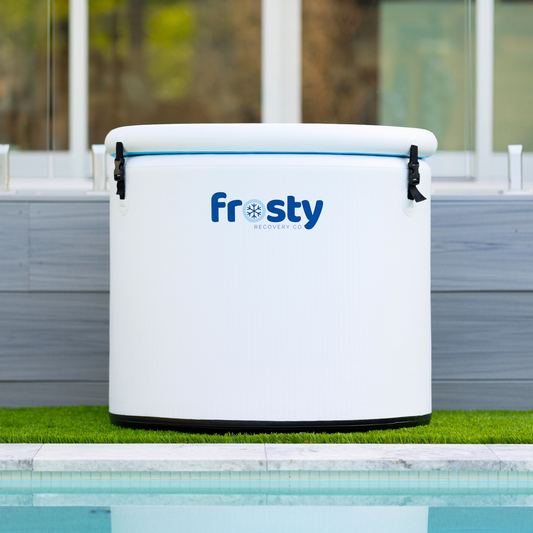
 Sale
SaleICE POD PRO
Regular price $299.00Regular priceUnit price / per$495.00Sale price $299.00Sale
DON'T JUST TAKE OUR WORD FOR IT. SEE WHAT OTHERS HAVE TO SAY.
-
Michael D.
★★★★★
Discovering cold plunging has been life changing! No longer have that mid day slump and feeling healthier and stronger than ever before!
-
Emily A.
★★★★★
My new favorite way to start the day. A nice pick me up first thing in the morning giving me energy for the rest of the day.
-
Shaun B.
★★★★★
An absolute game changer! Took care of my muscle soreness and some back pains I had from lifting. I recommend this to everyone I meet.







